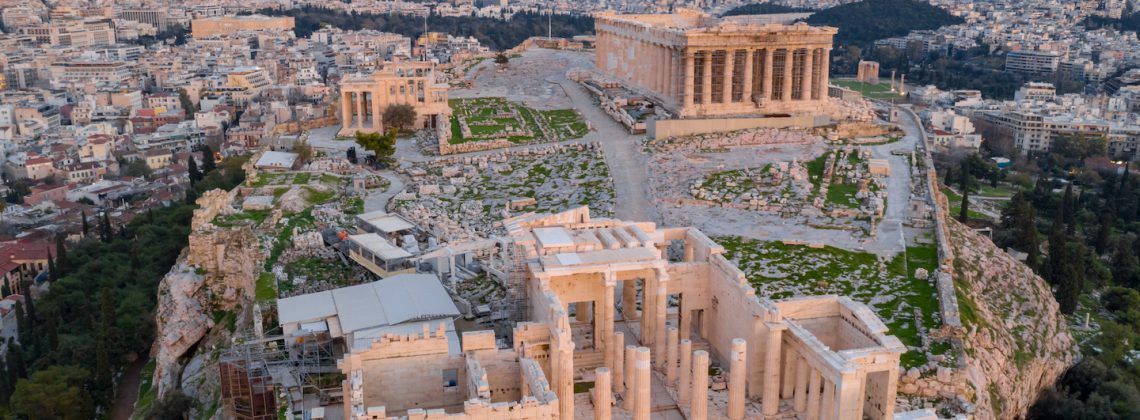Heading to the Acropolis in Athens? It is a massive archeological site that is labeled poorly, and without direction, you’ll lose interest quickly in the scorching Athenian sun! Fear not, here are some astounding facts you might not know about the Acropolis explained by a historian!
This article isn’t meant to replace a guided tour, quite the opposite! Reading up on an attraction will make a guided tour more memorable and interesting! You will impress your travel partners with your vast knowledge and engage more with the guide. Check out our guided tours of Athens! Also, bookmark our article on where to stay in Athens which we update annually.
15 Astounding Facts About the Acropolis in Athens
“Acropolis” and “Parthenon” are likely two words that you instantly connect with Greece and your trip to Athens. But why is that, and what’s the difference? As you might already know, it’s common to hear people say they have or want to climb the Parthenon to see the Acropolis. However, Greek authorities would rightly see scaling the Parthenon as a safety hazard to both the individual and historical monument. Guides have been setting the Acropolis/Parthenon record straight for well over a century. For example, American travel writer Clara Laughlin instructed her readers to distinguish between the two terms way back in 1935. So let’s begin by clearing up any Acropolis/Parthenon confusion.
First off, the Parthenon originally served as a temple dedicated to the city’s patron goddess, Athena. Simply put, the Acropolis is a fortified hill. As a result, there are many ancient acropoleis that you can visit today across Greece. Yet, the term is primarily associated with that famous hill in Athens. And the Parthenon is the reason why. The Parthenon continues to awe virtually every visitor as it has since the 5th century BCE. Thus, there’s only one Parthenon (well, not counting the temple that stood on the same site until 480 BCE and the massive replica currently in Nashville’s Centennial Park).
And with that fun nugget, here are 15 other astounding facts about the Acropolis in Athens
15. Acropolis means “high city” in Greek
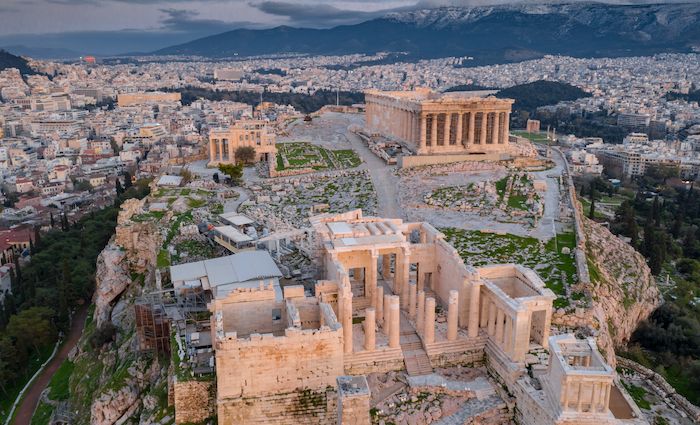
Elevation | Holy Rock | Legendary
As mentioned earlier, the term “acropolis” generally refers to a fortified hill. Moreover, historian Paul Cartledge reminds us that the name comes from the Greek “akro” and “polis.”
At the same time, the Acropolis is known as a sacred space. For example, historian Michael Llewellyn-Smith explains that the Acropolis is also known as Ieros Vrachos (Sacred Rock). Moreover, this nickname refers in part to the number of ancient temples.
However, the Acropolis originally gets this name because of the aftermath of the destructive Persian raids in 480 BCE. According to archaeologist Ioanna Venieri, Athenians buried surviving relics and votive offerings from the destroyed Acropolis temples in natural cavities in the rock, granting these a sacred status. More broadly, it refers to the long history of religious significance attached to the Acropolis.
14. The Parthenon originally served as the main temple dedicated to the goddess Athena
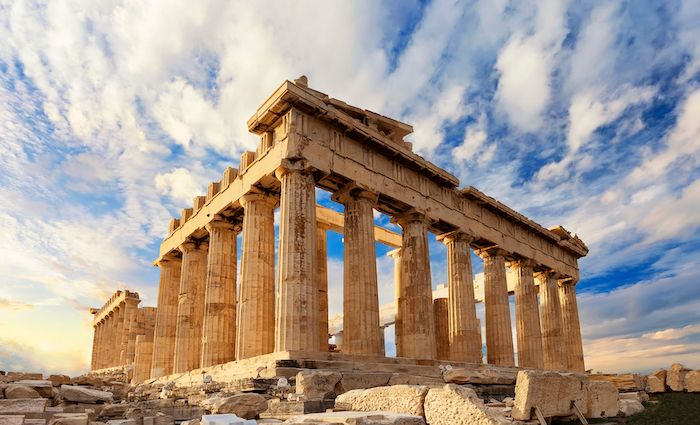
Wisdom | Glory | Ancient Marvel
The term “Parthenon” means “House of the Maiden or Virgin,” hence its association with the virgin goddess Athena. Athenians worshipped Athena to seek out many of her important qualities, including wisdom and military strategy. As a result, historian Paul Cartledge explains, Athenians celebrated the goddess through the epithet Polias (Patron) rather than grant the same title to the sea god Poseidon.
The Parthenon that you see today replaced an earlier temple, creatively known to scholars as to the Pre- or Proto-Parthenon. As archaeologist Ioanna Venieri explains, Persian raiders destroyed that temple and many others during Athens’s sack in 480 BCE. Following the Athenian victory over the Persians, Pericles embarked on a grand building project on the Acropolis.
Naturally, the Parthenon assumed pride of place among these celebratory monuments to Athenian glory. It dates to the period between 447-432 BCE. Furthermore, according to scholar Robin Wakefield, the Parthenon is comprised of a whopping 13,400 blocks of Pentelic marble. I think that qualifies as a bonus fun fact.
Pro Tip! Heading to the Acropolis? Use my list of the top thing to see at the Acropolis in Athens! Trust me, I have a PhD
13. The amazing disappearing and reappearing Temple of Athena Nike
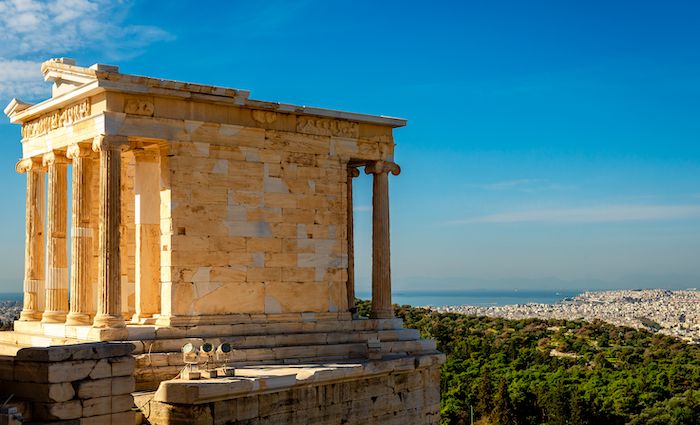
Compact | Sleek | Ageless Wonder
Step right up, folks, and see the incredible Temple of Athena Nike as you reach the summit of the Acropolis. Archaeologist Ioanna Venieri tells us this compact temple’s name refers to its dedication to the goddess Athena in her quality of Nike (Victory). This epithet relates to Athena’s martial qualities as Ancient Greeks considered her to be the goddess of military strategy.
Although the temple dates to roughly 415 BCE, it has been destroyed and rebuilt on three occasions. Remarkably, the temple survived demolition until 1686, when the Ottomans decided they needed to mount cannons to defend the city from a Venetian attack.
Historian Michael Llewellyn-Smith points out that the Ottomans buried the ruins of the temple of Athena Nike in the adjacent walls. Thus, Ottoman actions thus enabled archaeologists to later recover the ancient materials.
Moreover, Llewellyn-Smith tells us that reconstruction work began after Greek independence in the 19th century. However, the temple had to be demolished again because of poor structural support. At present, the reconstructed temple you’ll see dates from 2004.
12. The Propylaea remains unfinished
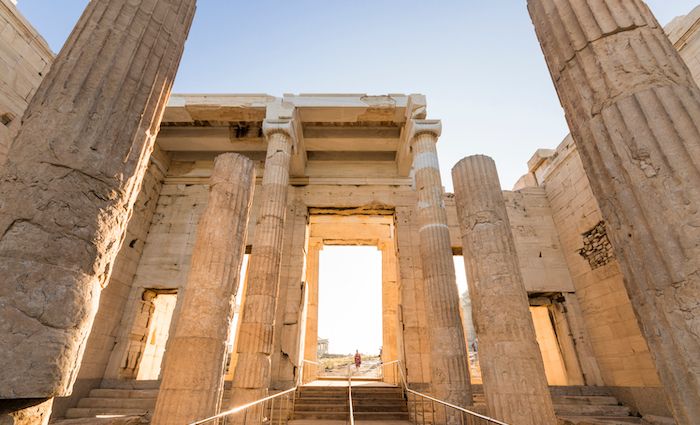
Welcoming | Impressive | Much Anticipated
The Propylaea, or gatehouse temple, serves as the grand stairway to the central monuments on the Acropolis. Archaeologist Ioanna Venieri says the Propylaea likely replaced an earlier version damaged by the Persians. Thus, the current structure dates to 436-432 BCE.
According to scholar Robin Wakefield, the Propylaea, like the Parthenon, cost the equivalent of many millions of dollars in modern money. Even still, the Propylaea never received the finishing touches as the Peloponnesian War against Sparta prevented further progress.
Scholar Richard Stoneman says we know the Propylaea remained unfinished because protective surfaces on the floors and stairs were never removed. Furthermore, archaeologists discovered multiple lifting mechanisms on the inside of its walls. In other words, the Propylaea is definitely in the running for the world’s longest construction project.
Check Out Our Best Food Tours of Athens
Going with a guide adds substance to your experience and will make it more memorable. Our groups are small and our guides are knowledgeable!

Top Rated Tour
Athens Cooking Class with Dinner and Rooftop View of the Acropolis
From delicious baked spanakopita to classic tzatziki sauce, join this cooking class to prepare authentic Greek recipes with an expert chef. With stunning views looking over the Acropolis, enjoy a 3-course dinner of your creations on this memorable experience in the Greek capital. Bring home the recipes and show your newfound culinary skills, along with amazing photos of the food and views.





(5)
Starting at €71

Likely to Sell Out
Athens “Locals” Food Tour in Monastiraki
Explore the gastronomic world of Athens through the city’s central market. Enjoy homemade pastries, authentic wines, cheeses, honey-soaked donuts and much more. Your local guide will lead you through the best spots in the lively Monastiraki neighborhood for a delicious experience in Athens.





(8)
Starting at €68
11. People once lived on the Acropolis
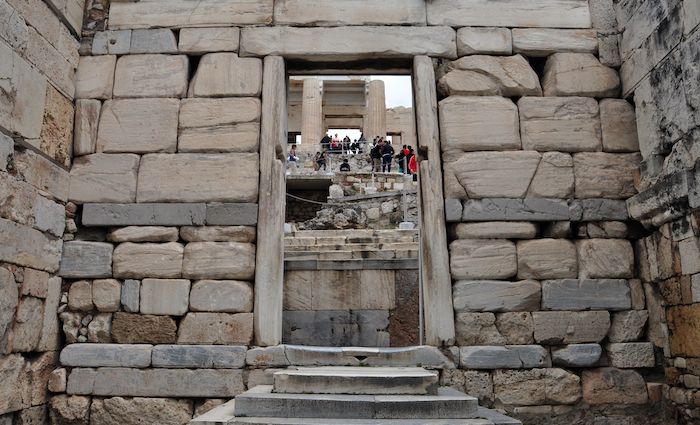
Neolithic | Lucky? | Sorry, Gods Only
Talk about prime real estate. According to archaeologist Ioanna Venieri, excavations yielded pottery shards dating back to the Neolithic period (4000/3500-3000 BCE). Moreover, archaeologists Christopher Mee and Anthony Spawforth note remains of a late 13th century BCE Mycenean palace.
However, historian Paul Cartledge says that despite this early evidence of inhabitation, by 500 BCE the Acropolis became an overwhelmingly religious and public space. At the same time, people continued to inhabit the lower slopes of the Acropolis for centuries.
But archaeologist Efi Gianikapani says much of the evidence of later inhabitation including churches are gone as a result of destruction in the Greek Revolution. Today you’ll find the area inhabited by cats.
10. The Parthenon moonlighted as an arsenal in 1687
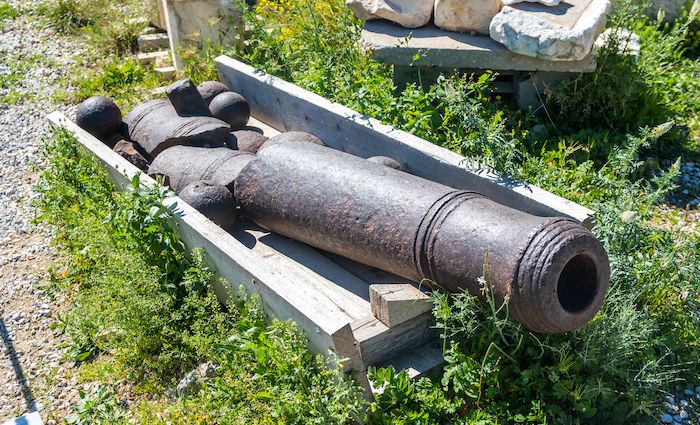
Oops! | Highly Flammable | Don’t Try This At Home
Scholars like historian Tom Gallant point out that it did not go well for three reasons. Firstly, the Ottomans stored a significant amount of gunpowder inside as they prepared to be besieged by the Venetians in 1687. Secondly, the Venetian commander, Francesco Morosini, did not care much about what would happen once he attacked the Acropolis. Finally, a shell from Venetian cannons made a direct hit to the Parthenon and the gunpowder.
As a result of the explosion, scholar Richard Stoneman tells us that all the central columns of the north and south sides were blown out. No event damaged the Parthenon more over the previous two thousand years.
Finally adding insult to injury, Morosini attempted to remove some of the Parthenon’s statuary back to Venice. However, according to archaeologist Ioanna Venieri, the pieces were smashed in the process.
9. The Erechtheion was the holiest of the Acropolis temples in antiquity
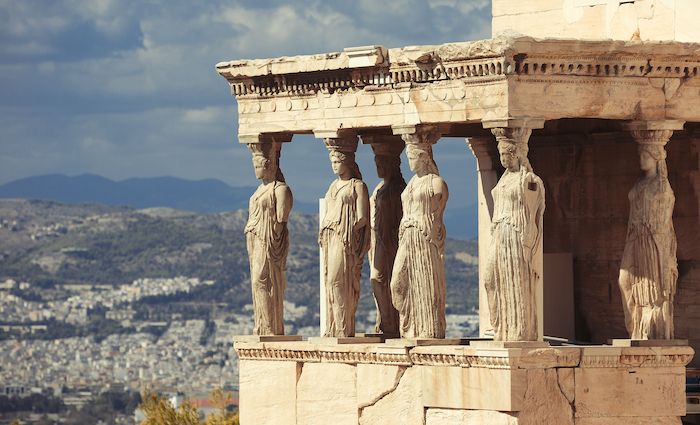
Unique | Multi-faceted | No Respect
You could say this temple gets no respect compared to the Parthenon. In fact, the Erechtheion actually held greater religious significance for ancient Athenians. It was so important, the Erechtheion could not be dedicated to just one deity. In fact, different parts of the temple became associated with 3 gods.
The first of these deities was naturally Athena. Historian Paul Cartledge explains a mythical Athenian king named Erechtheus joined Athena. Finally, the third place belonged to the sea god Poseidon. Pausanias also mentions an altar dedicated to Hephaestus.
However, this temple is most famous for its unique column design on one side. This is the so-called Porch of the Maidens. Known as caryatids, the maidens that you see today are replicas. The originals though are on display in the adjacent Acropolis Museum and at the British Museum in London.
8. The Acropolis remains a great entertainment venue
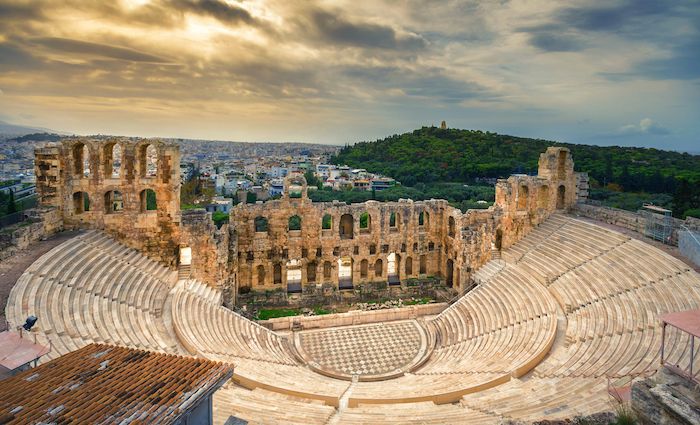
Rock On! | Personal Branding | Fancy
Ancient audiences flocked to the theater of Dionysus and Roman-era Odeon of Herodes Atticus. Located on the South Slope of the Acropolis, these theaters hosted performances of famous comedies and tragedies and special festivals. Moreover, ancient travel writer Pausanias tells us that Roman-era wealthy Athenian Herodes Atticus built the Odeon in honor of his late wife, Regilla in 161 CE.
And the wealthy Herodes Atticus spared no expense in building this grand venue. For instance, ancient writer Philostratus could not believe the amount of expensive cedar wood used in the building.
You can still see a show at the Odeon of Herodes Atticus today. For example, check out frequent scheduled performances during the summer months.
7. The Parthenon was part treasury part temple in antiquity
Sacred Gold | Treasure House | Ancient Athenian Fort Knox
Holy treasure-trove Batman! Is what you might be thinking when learning that the Parthenon was where the Athenians stashed their city-state’s wealth. Of course, we might think it is a bit strange to mix religion and public financial institutions. However, historian Paul Cartledge says Athenians’ attitudes regarding religion were different from ours in that they found nothing unusual about housing their treasury in the Parthenon (a temple).
As a result, Cartledge explains, essentially the Parthenon became the equivalent of an Athenian central bank. And there was a lot of money inside during the height of Golden Age Athens (c. 450-400 BCE). For example, Thucydides wrote that the gold on the statue of Athena Parthenos weighed 40 talents or about 1000 kg alone!
6. The Parthenon was both a church and mosque at different times
Sacred | Multi-Faith | Pilgrimage
By the 6th century CE, the Parthenon and other former pagan temples on the Acropolis became Christian churches. For instance, archaeologist Ioanna Venieri points out that from the 11th century CE, the Parthenon assumed the identity of the Church of Panagia Athiniotissa (Virgin of Athens).
While other former temples also became churches, the Parthenon emerged as a place of pilgrimage for Christians in the Eastern Roman (Byzantine) Empire.
Moreover, archaeologist Efi Gianikapani explains a number of other early Christian churches appeared on the south slope of the Acropolis. However, warfare and neglect gradually claimed these churches, particularly during the Greek Revolution in the 1820s.
Furthermore, during Ottoman rule, the Acropolis churches became mosques and administrative buildings. For instance, historian Tom Gallant tells us that the Parthenon was known as the Great Mosque of Ayia Sofia when a Venetian shell exploded in 1687.
5. A place of resistance

Heroic | Defiant | Indefatigable
The Acropolis also served as the backdrop for heroic moments in modern history. For example, historian Richard Clogg reminds us of the actions of Manolis Glezos and a friend during WWII. Shortly after Nazi German forces occupied Athens in late April 1941, the young Greek resistance fighters evaded German troops. After that, the resistance members looked to strike at the occupiers. Thus, they tore down the Nazi flag from the Acropolis flagpole and became legendary figures of resistance in Greece.
Today, Greek soldiers raise and lower the Greek flag from that same spot each day. On top of that, you can enjoy spectacular views of the city from the flag pole on the Belvedere.
4. A battlefield
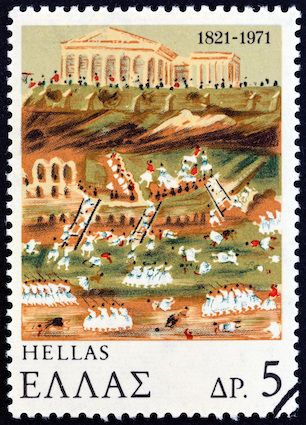
Brave | Contested | Hallowed Ground
The Acropolis is no stranger to warfare over the centuries. Sacked by invaders like the Persians (480 BCE) and Roman army of Sulla (86 BCE), the Acropolis remained a fortress into modern times. For example, the Acropolis served as a fortress and battlefield during the Greek Revolution against the Ottoman Empire in the 1820s.
Historian David Brewer tells us that there were two lengthy sieges of the Acropolis during the Greek Revolution (1821-22, 1826-27). Moreover, both sides took turns defending the fortress and each surrendered. Despite their violent intentions, soldiers tried not to cause extensive damage to the monuments. For instance, historian Christopher Hitchens says Greek rebels offered to send ammunition to defending Ottoman troops so that they would not damage ruins on the Acropolis to make bullets.
Nevertheless, as Michael Llewellyn-Smith explains, archaeologists in the 1830s faced many obstacles created by the sieges when they began to preserve the ancient monuments. Furthermore, archaeologists ordered several structures built during later eras demolished in order to restore the Acropolis to a more “authentic” ancient appearance.
3. Housed the largest meeting place in Ancient Athens
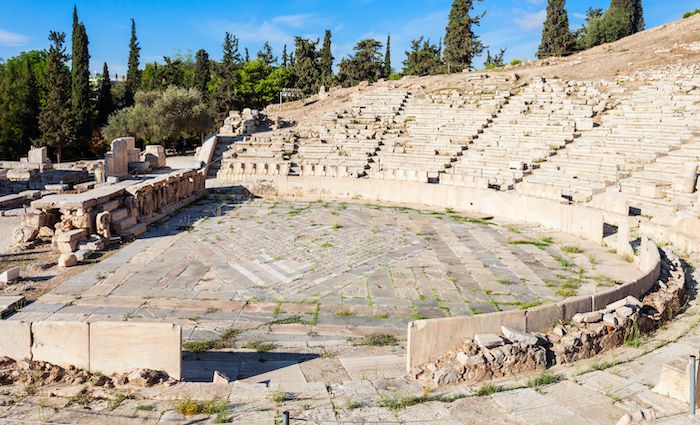
Civic Duty | Ancient Award Shows | Mysterious
According to scholar Robin Wakefield, the Theater of Dionysus on the South Slope of the Acropolis seated nearly 20,000 people. Thus, there was no larger venue than this theater in the ancient city. Moreover, the theater was an important symbol of Athenian democracy, because the city’s government met there at times.
The theater also hosted important festivals. Here poets and artists competed for glory and the adoration of crowds. For instance, Michael Llewellyn-Smith explains that winners received dedicated monuments that served as ancient equivalents of modern entertainment awards. Furthermore, a surviving example is the Monument of Lysicrates (335 BCE) located in the nearby neighborhood of Plaka.
Yet, archaeologists Christopher Mee and Anthony Spawforth say that much of this area’s history remains a mystery to scholars. One thing though that will be clear to you is how expansive the ruins of this theater remain.
Check Out Our Best Athens Tours
Going with a guide adds substance to your experience and will make it more memorable. Our groups are small and our guides are knowledgeable!
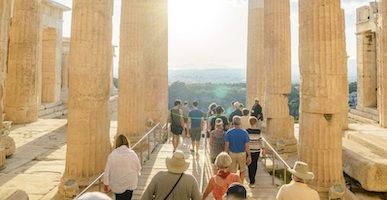
Top Rated Tour
Skip the Line Acropolis Tour with Parthenon and Museum
Towering above the modern city of Athens, explore the ancient forum home to the relics of Classical Greece. From the world’s oldest theatre to the iconic Parthenon, the Acropolis is a beacon of civilization and philosophy. Head back in time to the time of Plato and Socrates on this Skip-the-Line tour.





(5)
Starting at €80

Likely to Sell Out
Athens “Locals” Food Tour in Monastiraki
Explore the gastronomic world of Athens through the city’s central market. Enjoy homemade pastries, authentic wines, cheeses, honey-soaked donuts and much more. Your local guide will lead you through the best spots in the lively Monastiraki neighborhood for a delicious experience in Athens.





(8)
Starting at €68
2. The statue of Athena Parthenos was a marvel of the Greek world
Expensive | Inspirational | Emergency Fund
A 40 ft.standing gold and ivory draped statue of an armed goddess Athena dominated the shrine area of the Parthenon. As Roman-era travel writer Pausanias tells us, this imposing statue depicted Athena as her epithet Parthenos (maiden, virgin) goddess of Athens.
The celebrated Athenian sculptor Phidias created the Athena Parthenos statue. However, according to Plutarch, Pericles could strip the precious materials from the statue in the event of a financial crisis. Moreover, archaeologists Christopher Mee and Anthony Spawforth point out that 3rd century BCE Athenian leader Lachares did strip the gold to pay his soldiers.
Art historian Nigel McGilchrist says the statue had admirers and emulators across the Greek world. Above all, you could say this statue became the gold standard for votive decorations in Ancient Greek temples. For example, McGilchrist points to the statue of Athena in the Temple of Athena Lindia at Lindos in Rhodes. By the 5th or 4th century BCE, the Rhodian temple had a statue of the armed Athena like that of the Parthenon.
Of course, it was clearly a knock-off Phidias, as it was not decorated in gold and ivory. Furthermore, scholar Richard Stoneman mentions that you can see a replica of Athena Parthenos in Nashville. However, this too is missing the gold decoration.
1. Is no stranger to controversy
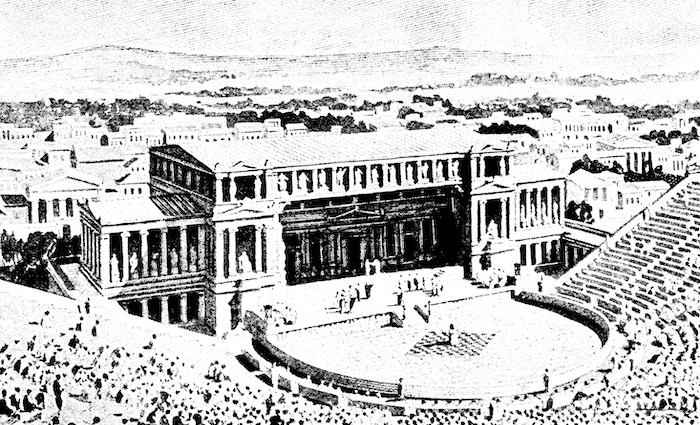
Scandalous | Politics | Pride
In fact, critics found fault with Athenian leader Pericles shortly after the Parthenon’s completion. As scholar Robin Wakefield tells us, in 429 BCE, some Athenians impeached Pericles on charges of embezzlement and negligent spending on the Acropolis temples. However, they quickly reinstated Pericles shortly before his death.
No doubt the most famous and enduring controversy involves a one-time British envoy to the Ottoman Empire, Lord Elgin. According to historian Michael Llewellyn-Smith, between 1801 and 1812, Lord Elgin arranged with Ottoman authorities and agents to transport many of the surviving carved reliefs and statuary from the Parthenon. Moreover, Elgin’s claims to have official permission became dubious over time.
Nevertheless, by 1816 these pieces came into possession of the British Museum in London. As a result, they remain there to this day. Apparently realizing the consequences of the removal by 1814, Elgin paid for the construction of a clock tower in central Athens. However, as scholar Richard Stoneman points out, this tower did not even last a century before it was demolished. Lord Elgin though, is far from forgotten in Greece today.
As for the so-called Elgin Marbles, successive Greek governments and various private organizations continue to lobby for their return. However, there has been no movement. Moreover, the remaining statuary from the Acropolis is now on display in the Acropolis Museum in Athens.
Hopefully, these facts have you ready to go as you visit the amazing Acropolis of Athens!
